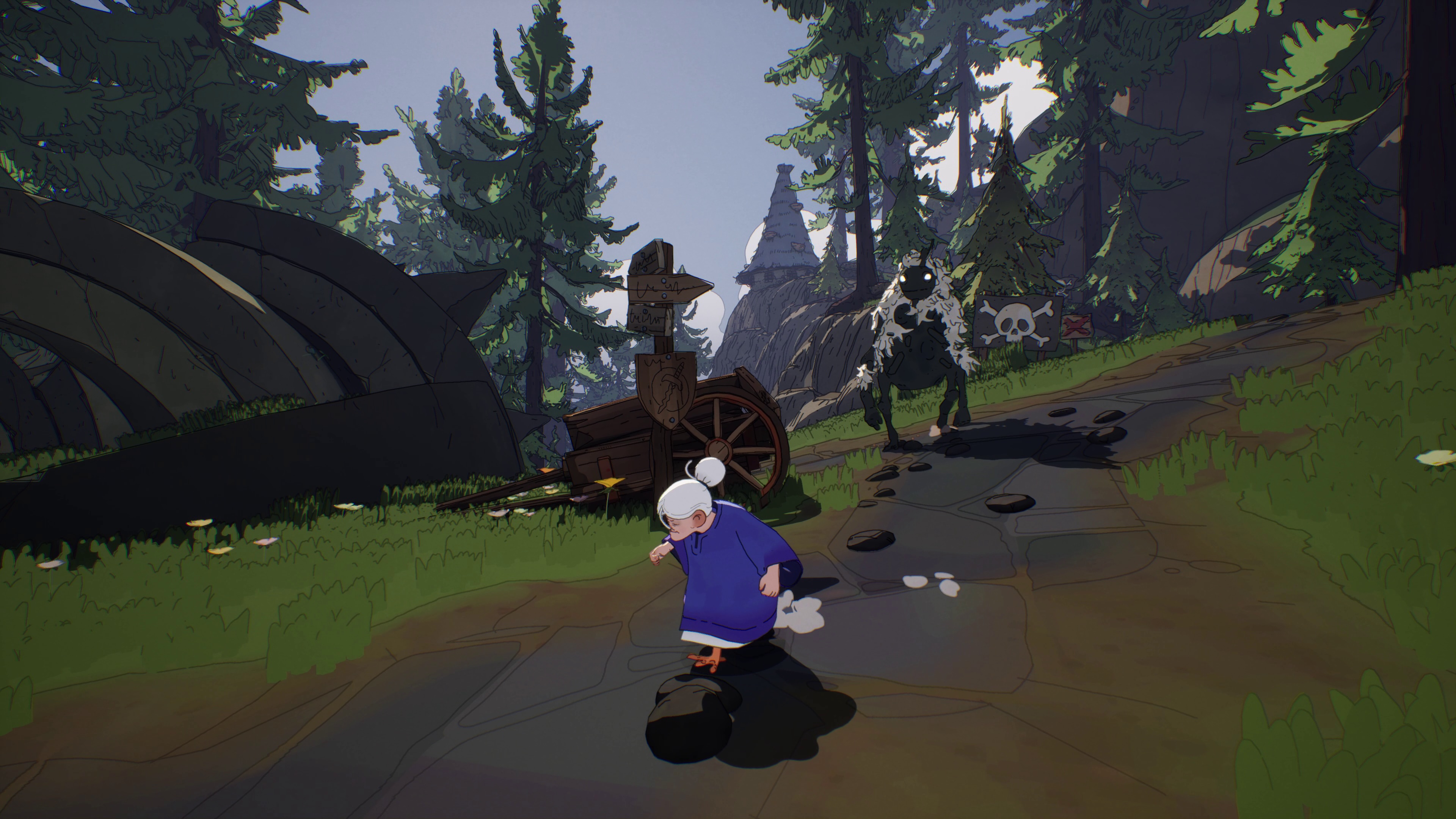This year at The Game Awards, if your game wasn’t melodramatic, mechanically innovative, beautifully presented and aggressively French, it didn’t stand a chance. The Game Awards 2025 wrapped up on the evening of Thursday, December 11 with a record-breaking showing by Clair Obscur: Expedition 33 from Sandfall Interactive. The game received the most nominations and wins in the show’s 12-year history.
But, we know that’s not really why you’re here. Between the award presentations and musical numbers, there were heaps of new game trailers, announcements and updates, and we’ve collected them all for you right here. The award winners are also there.
News
Bradley the Badger looks like Wreck-It Ralph as a real video game
Star Wars: Fate of the Old Republic is a new action RPG from the director of Mass Effect and KOTOR
Larian Studios is returning to the Divinity series with... Divinity
Coven of the Chicken Foot is the debut game from Naughty Dog alum Bruce Straley's indie studio
The devs of SOMA are back with a spiritual successor called Ontos
4:LOOP is a co-op shooter from the creator of Left 4 Dead and JJ Abrams' Bad Robot
Control Resonant steps into a larger world that's inspired by Neon Genesis Evangelion
Lego Batman: Legacy of the Dark Knight swoops onto PC and consoles on May 29
Lara Croft will return in Tomb Raider: Catalyst and a new remake
Award winners
Best family game: Donkey Kong Bananza
Innovation in accessibility: Doom: The Dark Ages
Best esports game: Counter-Strike 2
Best esports athlete: Chovy
Best esports team: Team Vitality
Best mobile game: Umamasume: Pretty Derby
Best indie game: Clair Obscur: Expedition 33
Best adaptation: The Last of Us season 2
Best action game: Hades II
Best performance: Jennifer English, Clair Obscur: Expedition 33
Games for impact: South of Midnight
Best ongoing game: No Man’s Sky
Best audio design: Battlefield 6
Content creator of the year: MoistCr1TiKaL
Best fighting game: Fatal Fury: City of the Wolves
Most anticipated game: Grand Theft Auto VI
Best action/adventure game: Hollow Knight: Silksong
Best art direction: Clair Obscur: Expedition 33
Best sim/strategy game: Final Fantasy Tactics: The Ivalice Chronicles
Best debut indie game: Clair Obscur: Expedition 33
Best score and music: Clair Obscur: Expedition 33
Best sports/racing game: Mario Kart World
Best community support: Baldur’s Gate 3
Best VR/AR game: The Midnight Walk
Best RPG: Clair Obscur: Expedition 33
Players’ voice: Wuthering Waves
Best narrative: Clair Obscur: Expedition 33
Best multiplayer game: Arc Raiders
Best game direction: Clair Obscur: Expedition 33
Game of the year: Clair Obscur: Expedition 33
Trailers
Pragmata by Capcom
Star Wars: Fate of the Old Republic by Arcanaut Studios and Lucasfilm Games
Divinity by Larian Studios
Coven of the Chicken Foot by Wildflower Interactive
ONTOS by Frictional Games
4:LOOP by Bad Robot Games
Resident Evil Requiem by Capcom
Order of the Sinking Star by Thekla
Exodus by Archetype Entertainment
WARLOCK by Invoke Studios and Wizards of the Coast
Control Resonant by Remedy Enterainment
Gang of Dragon by Nagoshi Studio
Street Fighter movie sneak peak
LEGO Batman: Legacy of the Dark Knight by Warner Bros. Games
Tomb Raider: Catalyst by Crystal Dynamics
Tomb Raider: Legacy of Atlantis by Crystal Dynamics and Flying Wild Hog
Invincible VS by Skybound Games
Diablo 4: Lord of Hatred by Blizzard Entertainment
Deadpool is coming to Marvel Rivals
007 First Light – Lenny Kravitz Announcement
Saros by Housemarque
Warframe featuring Werner Herzog for some reason
Total War: Warhammer 40,000 by Creative Assembly
Hitman World of Assassination by IO Interactive
Ace Combat 8: Wings of Theve by Bandai Namco
Star Wars Galactic Racer by Fuse and Lucasfilm Games
Out of Words by Kong Orange and WiredFly
Phantom Blade Zero by S-GAME
Mega Man Dual Override by Capcom
Super Mario Galaxy movie trailer
Highguard by Wildlight Entertainment
Don’t forget to check out our Day of the Devs: The Game Awards 2025 roundup, which included six world premieres, three release date announcements and a whole bunch of awesome indie goodness. The Wholesome Snack, Women-Led Games and Latin American Games showcases tied to the awards were also downright delightful.
This article originally appeared on Engadget at https://www.engadget.com/gaming/everything-announced-and-all-the-winners-at-the-game-awards-2025-044101761.html?src=rss